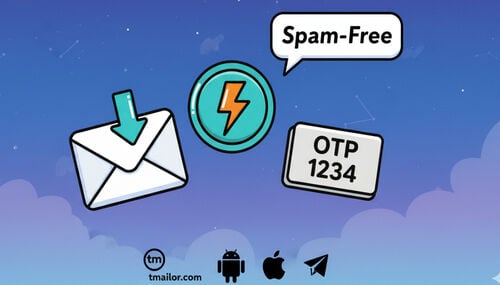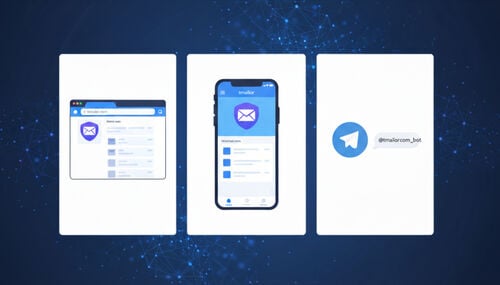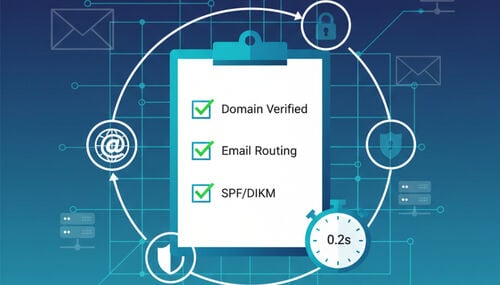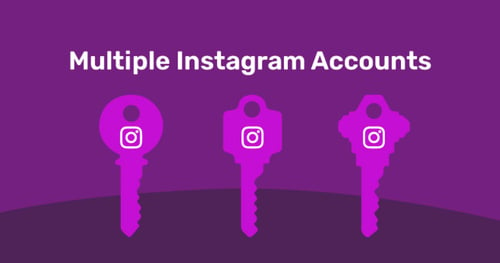Reusable vs Short‑Life Inbox: Security Model, Privacy Trade‑offs, and Token‑Based Recovery
On the surface, picking a temporary inbox sounds trivial. Your choice dictates how reliably codes arrive, how private you remain, and whether you can reopen the exact address later. This satellite guide helps you choose confidently and explains how access tokens power safe Recovery. Choose reusable vs short-life for the whole pipeline from MX routing to real‑time display.
Quick access
TL;DR / Key Takeaways
Make The Right Choice
Understand Reusable Inboxes
Understand Short‑Life Inboxes
Token‑Based Recovery Explained
24‑Hour Display Window (TTL)
Deliverability & Privacy Trade‑offs
Decision Framework (Flow)
Comparison Table
How To: Use Reusable With Token
How To: Use Short‑Life Safely
Real‑World Scenarios
Abuse Controls Without Friction
Best Practices Checklist
FAQ (Concise)
The Bottom Line
TL;DR / Key Takeaways
- Reusable inboxes keep continuity for repeat logins, password resets, and cross‑device access, enabled by a secure access token.
- Short‑life inboxes minimize storage footprint and long‑term traceability—ideal for one‑off sign‑ups and quick trials.
- A ~24‑hour display window limits message visibility, curbing risk while preserving fast OTP flows.
- Decide by asking: Will I return soon? How sensitive is the service? Can I store a token safely?
Make The Right Choice
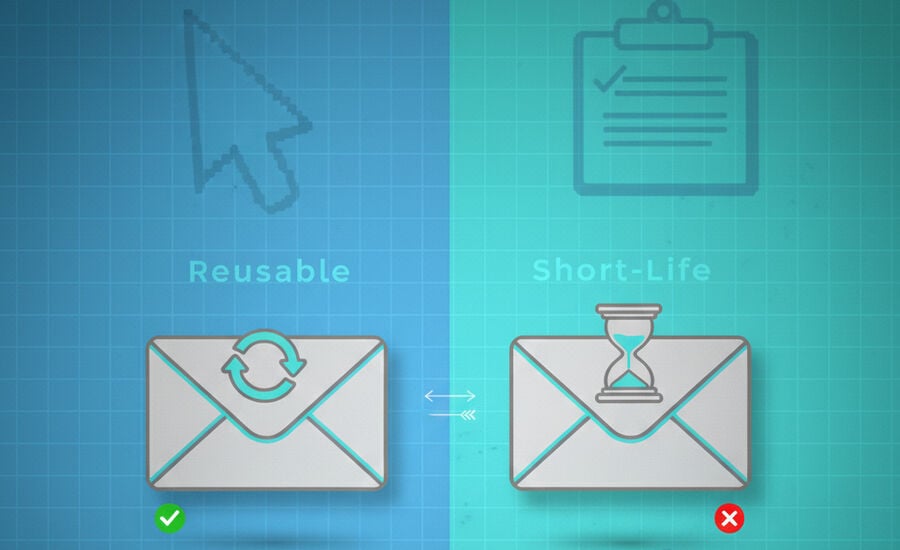
Focus on what you truly need: repeat verification, privacy comfort, and your capacity to store a token securely.
Most problems appear later—when you must reset a password or re‑verify a login. Ask first: Will I need this address again in 30–90 days? Is the service sensitive (banking, primary identity), or just a forum freebie? Do I log in from multiple devices? If continuity matters and you can handle a token, pick reusable. If it’s a single, low‑stakes action, short-lived is cleaner.
Understand Reusable Inboxes
Keep continuity for logins and resets while avoiding inbox clutter and tracking risks.
Reusable inboxes excel when you expect recurring OTP flows and ongoing notifications. You get a stable address and an access token to reopen the mailbox later.
Advantages
- Continuity: fewer account headaches for resets and re‑verification.
- Cross‑device: open the same mailbox on any device — including Android & iOS — with your token.
- Efficiency: less time generating new addresses; fewer blocked logins.
Trade‑offs
- Secret hygiene: protect the token; if exposed, someone could reopen your mailbox.
- Personal discipline: use a password manager; avoid sharing screenshots or plaintext notes.
Understand Short‑Life Inboxes
Reduce long‑term exposure by using an existing address for a task and getting out of your way.
Short‑life inboxes fit quick interactions: download a whitepaper, grab a coupon, or trial an app. They leave fewer breadcrumbs and shrink the attack surface because there’s nothing to “return to.”
Advantages
- Minimal footprint: fewer traces over time.
- Low maintenance: no token to keep, nothing to manage later.
Trade‑offs
- No continuity: future resets require generating a new address and re‑linking.
- Possible friction: some sites dislike purely ephemeral addresses.
Token‑Based Recovery Explained

Access tokens reopen the exact mailbox you used before; they are not email passwords and never send mail.
Think of the token as a precise key mapped to your mailbox ID:
- Create an address and receive a unique token.
- Store the token safely (preferably in a password manager).
- When you return, paste the token to reopen the same mailbox.
Security tips
- Treat tokens like secrets; avoid screenshots and shared notes.
- Rotate to a fresh address if you suspect exposure.
- Never reuse tokens across different contexts; keep each mailbox unique.
24‑Hour Display Window (TTL)

A permanent address doesn’t imply permanent message storage.
Content visibility is short (about 24 hours) to limit retention while preserving fast OTP delivery. Practically, that reduces the risk of old messages being revisited. Plan to act promptly, enable notifications where possible, and avoid reliance on historical inbox content.
Deliverability & Privacy Trade‑offs
Balance code arrival reliability, abuse controls, and how much trace you leave.
- Reusable: improves practical deliverability for ongoing accounts because you keep using a known route and domain set.
- Short‑life: leaves fewer long‑term traces; if a site resists ephemeral addresses, switch to a reusable path.
- Abuse controls: rate limiting and greylisting should operate behind the scenes without slowing legitimate OTP.
- Anti‑tracking: image proxying and link‑rewrites reduce pixel beacons and referrer leakage.
Decision Framework (Flow)
Ask a few targeted questions, then double-check your risks before you proceed.
- Will you likely re‑verify or reset within 30–90 days?
- Does the site demand OTP at each login?
- Is the data sensitive enough to warrant continuity?
- Can you safely store an access token?
If most answers are yes → choose Reusable. If not—and it’s truly one‑and‑done → choose Short‑life. Consider context (shared devices, public terminals, travel) that may push you toward short-lived for safety.
Comparison Table
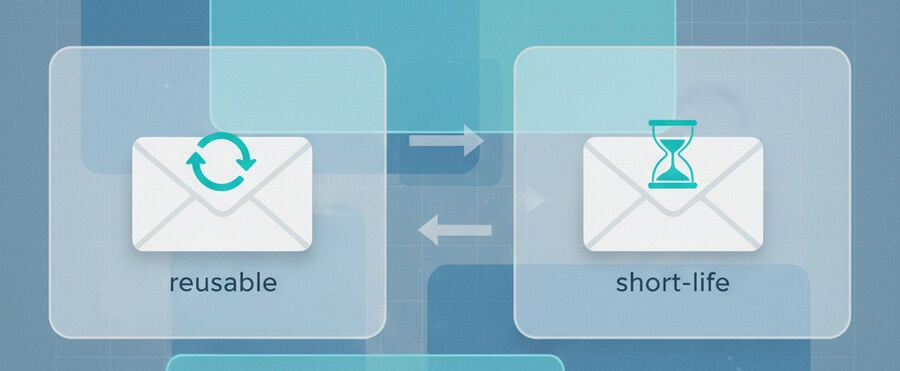
Scan the differences before you lock in your choice.
table
How To: Use Reusable With Token
Follow these steps to keep continuity without compromising security.
Step 1: Create a reusable inbox — Generate the address and capture the access token immediately.
Step 2: Store the token securely — Use a password manager; avoid screenshots and unencrypted notes.
Step 3: Reopen your mailbox later — Paste the token to regain access for logins, resets, or notifications.
Step 4: Rotate if exposure is suspected — Create a new mailbox and stop using the old token if compromise is suspected.
How To: Use Short‑Life Safely
Minimize exposure by treating the address as disposable from start to finish.
Step 1: Generate a short-lived address — Create it for a single verification or download flow.
Step 2: Complete your one‑off task — Finish the sign‑up or OTP action; avoid attaching sensitive accounts.
Step 3: Close and move on — Close the tab, skip saving the token, and create a different temp mail address next time.
Real‑World Scenarios
Choose according to context: e‑commerce, gaming, or developer testing.
- E‑commerce: Reusable for order tracking and returns; short‑life for quick coupons.
- Gaming / Apps: Reusable for primary profiles or 2FA backup; short‑life for experimental alts.
- Developer testing: Short-lived for bulk test inboxes; reusable for regressions and long‑running tests.
Abuse Controls Without Friction
Keep OTPs fast while filtering out bad traffic behind the scenes.
Apply layered rate‑limits, lightweight greylisting, and ASN‑based signals to tamp down abuse without slowing legitimate OTP traffic. Separate suspicious patterns from standard login flows so real users stay fast.
Best Practices Checklist
A quick run‑through before you pick and use an inbox model.
- Reusable: store tokens in a password manager; never share; rotate when in doubt.
- Short‑life: stick to low‑stakes tasks; avoid banking or primary identity accounts.
- Both: act within ~24 hours; prefer private devices; enable notifications where available.
FAQ (Concise)
Is a reusable inbox safer than a short-life inbox?
They solve different problems; reusable is safer for continuity, and short-life minimizes long-term traces.
What exactly is token-based Recovery?
A unique token maps back to your mailbox ID so you can reopen the exact address later.
If I lose my token, can support restore it?
No. Lost tokens cannot be reissued; create a new address.
Why are messages only visible for about 24 hours?
Short visibility limits retention risk while keeping OTP delivery fast.
Can I use short-life addresses for financial services?
Not recommended; choose reusable if you expect resets or sensitive notices.
Can I switch from short-life to reusable later?
Yes—create a reusable mailbox and update the account’s email in the future.
Will websites block temporary inboxes?
Some may say that keeping a reusable option helps when a site resists purely ephemeral addresses.
How do I store tokens securely?
Use a reputable password manager; avoid screenshots and shared notes.
The Bottom Line
Choose reusable if continuity, resets, or cross‑device access matter—and you’re willing to safeguard a token. Choose short‑life if it’s truly one‑and‑done and you prefer to leave almost no trace afterward. For the end‑to‑end internals, read the technical A–Z explainer.



